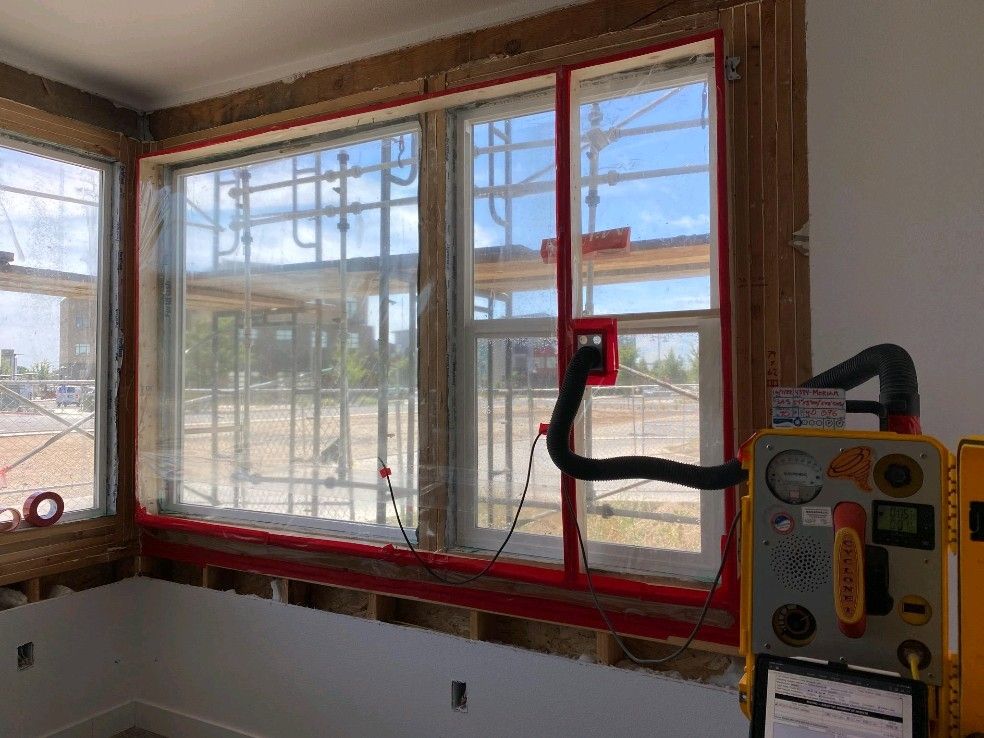A waterproofing “mistake” is the failure of a product or installation to perform given the specific environment; we become aware of the mistake when it develops into a leak.
As waterproofing consultants we often observe installations that are contrary to industry standards or good practice. For example, flashing that is not weatherlapped in shingle fashion may never leak in a given environment. However, such reverse-laps are contrary to sound building practices and carry a high probability of failure in all but the most weather protected locations. In this situation, the waterproofing consultant will note the deviation and advise the client that it should be corrected.
Early in the process the Owner, Developer and Architect have an opportunity to identify and specify the quality of the elements that become the building envelope. The “mistakes” listed are errors that are made during the pre-construction phase of the building process that may be avoided if a Waterproofing or Building Envelope Consultant is part of the design phase.
Here are the top 10 waterproofing mistakes we see in the design phase:
1. Not Understanding the Owner’s Expectations
Owners and developers perceive the term “waterproof” as a directive.The reality is that there are several tiers and qualities of waterproofing; from water resistant, to damp-proofing, to waterproofing that requires maintenance, to durable and maintenance-free waterproofing. For example, to effectively and efficiently specify and detail the waterproofing for a basement, the design team must know how dry the owner expects the basement to be. A little controlled leaking may be permissible such as in the case of a parking basement, or absolutely no moisture may be permissible as in the case of a below grade museum.
The most expensive waterproofing is not always the most appropriate selection for the project, and seldom will the least expensive materials and procedures meet expectations. An experienced consultant will evaluate the project conditions and recommend the appropriate system to provide the intended results.
2. Foregoing Peer Review
The most cost effective service that a waterproofing consultant can provide is a review of the waterproofing and building envelope documents prior to construction. Waterproofing consultants typically annotate the available details, provide sketches of recommended details, review project specifications regarding weather resistive components and comment on their integration into the building envelope. The proposed waterproofing systems can be evaluated for the unique project conditions and easily changed or adjusted during the planning stage.
3. Unfamiliarity with the Range of Products and Options
The advantage of using an independent third party consultant is that they are not associated with any manufacturer or installer. This allows the autonomy to evaluate and recommend the appropriate waterproofing system for each assembly.
Manufacturer representatives are obligated to recommend the products of a particular manufacturer. Contractors will typically recommend products with which their crews are most familiar. The best approach is to use a waterproofing consultant that is knowledgeable about the wide range of products and options available to meet the requirements of the project. Make sure that the consultant you select can not only recommend the appropriate product but does so based on the track record of the product and the knowledge that there are several local qualified installers.
4. Undervaluing the Benefit of a Waterproofing Consultant
A waterproofing consultant should have the training and experience that comes with years of evaluating the complexities of waterproofing systems. Often, a very experienced construction superintendent will spend weeks trying to determine appropriate installations, where a waterproofing consultant may require only a few hours. Moreover, the consultant increases the probability of success.
5. Overly Complex and Layered Systems
The best waterproofing systems are the simple ones. Good planning can eliminate unnecessary twists and turns that can complicate an otherwise reasonably straightforward system. Successful waterproofing is dependent on the proper integration of many elements and is not just the installation of one product. Several steps, along with preparation for the installation of each material, are required. The use of too many waterproofing products or materials can lead to failure due to incompatibility of the various materials. Simplify the waterproofing elements and installations whenever possible.
6. Not Specifying Regular Waterproofing Observations
Much of the industry has embraced full-time observation of roof installations, but regularly scheduled observations to assure reliable waterproofing installations has yet to occur. Roofing systems differ from waterproofing systems, in that typically roofing is readily repaired and resurfaced, while waterproofing, often intended to be permanent, may be nearly impossible to access, repair, or replace. Repairing faulty waterproofing can cost hundreds of times more than roofing repairs. Regular installation observations of the waterproofing and building envelope components ought to be required in the specification sections; particularly for inaccessible, buried, and blindside waterproofing.
7. Ignoring the Durability of the Waterproofing System
The “durability” of any waterproofing system directly relates to how long it is estimated that it will function. Some systems require resurfacing every 5 years, while others are designed to function for the life of the structure. A waterproofing consultant should help homeowners and developers navigate manufacturer’s sales claims regarding the likely durability of the various products and systems. In the most challenging waterproofing environments, “redundant” or backup systems are recommended.
8. Choosing a System Based on the Warranty
Manufacturer warranties are written to the benefit of the manufacturer. Most waterproofing manufacturers’ warranties will not repair or replace the waterproofing membrane unless the overburden is removed and replaced by others. Overburdens are the extensive and expensive components of plazas, garden roofs and terraces, i.e., paving, landscaping and hardscapes. It is much more advisable to install proven, reliable, durable waterproofing to begin with than to gamble the initial savings against the cost of future repairs.
9. Ignoring Maintenance
Ignorance is bliss, that is until there is a leak. Of course, a leak develops at the most inconvenient time such as during a rainstorm. It’s important to know that you have a choice when selecting the level of durability and reliability in a waterproofing system. Whereas buried membranes typically should not require maintenance, all exposed waterproofing systems require some modicum of periodic maintenance. Maintenance and longevity go hand in hand; ignore the maintenance of the system and longevity of the structure will be at risk.
The maintenance requirements should be identified in the specification sections and required as part of the project submittals. In California, the legislature has codified the water resistance/waterproofing requirements for many building components in residential construction. Waterproof pedestrian traffic decking, for example, normally has a five-year manufacturer’s warranty. Compare that to California’s SB 800 requirement that the deck assembly be waterproof for ten years (the statutes’ limitation).
The specifications, submittals, warranty and maintenance data should spell out how building components with short manufacturer warranties and a longer statute of repose will be maintained and who is expected to fund the maintenance.
A waterproofing consultant looks at the bigger picture and can offer advice regarding the entire assembly.
10. Not Engaging the Services of an Experienced Team of Waterproofing Consultants
Good waterproofing/building envelope consulting firms can offer their clients a full range of services beyond solving a specific problem.
A waterproofing consultant can assist the client in being proactive about preventing water intrusion and participate in plan development and review, construction consultation and design support, site observations for compliance and advice, non-invasive and destructive testing, building commissioning and maintenance recommendations.
If water intrusion is already a problem, a consultant needs to be able to evaluate the full scope of the problem before making repair recommendations.
Waterproofing consultants are also qualified to conduct construction forensics in connection with plaintiff claims or defendant responses and serve as expert witnesses. It makes sense to look at the full range of services a waterproofing consulting rm offers as a factor in determining their level of expertise.


